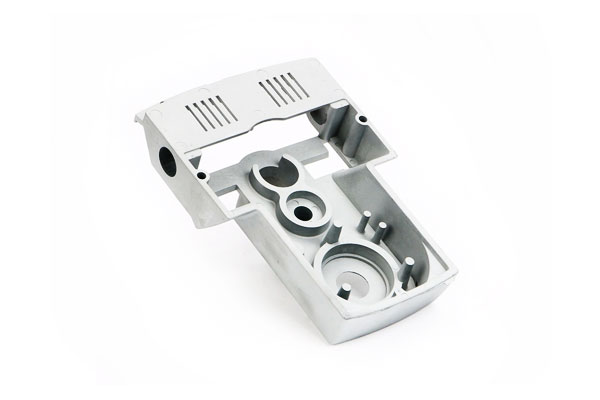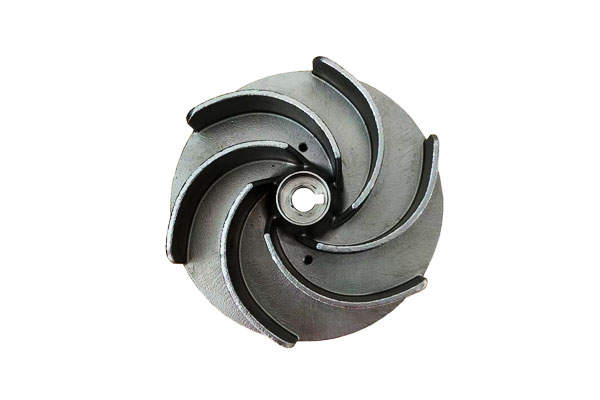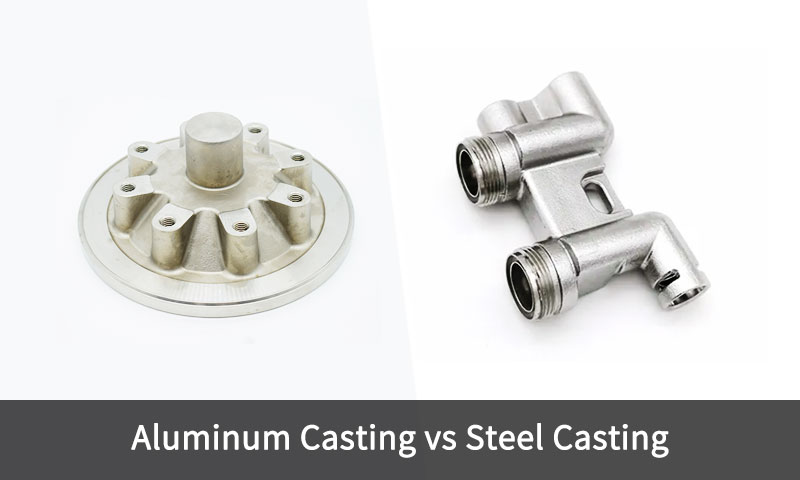1. Zavedení
Hliník vs ocelový odlitek – výběr mezi těmito dvěma základními materiály ovlivňuje výkon součástí, náklady a vyrobitelnost napříč průmyslovými odvětvími od automobilového průmyslu po energetiku.
Toto srovnání není pouze o chemii kovů: zahrnuje hustotu a tuhost, tepelné chování, kompatibilita procesu odlévání, sekundární zpracování (tepelné zpracování, povrchové inženýrství), náklady životního cyklu a spolehlivost specifická pro aplikaci.
Inženýři a nákupčí proto musí vyhodnotit celý systém – načítání, teplota, prostředí, objem výroby a požadavky na konečnou úpravu – před specifikací postupu pro kov a odlévání.
2. Základní materiálové rozdíly mezi hliníkem a ocelí
V jádru hliník vs. ocelový odlitek spočívá v základním metalurgickém a fyzikálním kontrastu, který přímo ovlivňuje, jak se každý materiál chová během odlévání, obrábění, a služba.
| Vlastnictví | Hliník (NAPŘ., Al-i přitahuji) | Ocel (NAPŘ., uhlíkové nebo nízkolegované oceli) | Inženýrské důsledky |
| Hustota (g/cm³) | 2.70 | 7.85 | Hliník je o ~65 % lehčí, nabízí významné úspory hmotnosti pro dopravu a letecký průmysl. |
| Bod tání (° C.) | 615–660 | 1425–1540 | Nízký bod tání hliníku umožňuje snadnější lití a nižší spotřebu energie; ocel vyžaduje specializované pece. |
| Tepelná vodivost (W/m · k) | 120–180 | 40–60 | Hliník efektivně odvádí teplo – ideální pro motory, výměníky tepla, a elektronika. |
| Konkrétní síla (MPA/ρ) | ~100–150 | ~70–90 | I přes nižší absolutní pevnost, poměr pevnosti k hmotnosti hliníku předčí ocel. |
| Elastický modul (GPA) | 70 | 200 | Ocel je tužší, poskytuje lepší tuhost při zatížení a vibracích. |
Odolnost proti korozi |
Vynikající (tvoří Al203 vrstvu) | Proměnná; náchylné ke korozi bez nátěrů | Hliník přirozeně odolává oxidaci, zatímco ocel potřebuje povrchovou ochranu (malování, Posunutí, nebo legování Cr/Ni). |
| Machinability | Vynikající | Mírný až obtížný | Měkkost hliníku umožňuje snadné obrábění a kratší doby cyklu; ocel vyžaduje tvrdší nástroje. |
| Recyclabality | >90% obnovitelné | >90% obnovitelné | Oba materiály jsou vysoce recyklovatelné, i když přetavení hliníku vyžaduje méně energie (5% prvovýroby). |
| Smrštění lití (%) | 1.3–1.6 | 2.0–2.6 | Ocel se při tuhnutí více smršťuje, vyžadující větší přídavky a složitější systémy vtoku/krmení. |
| Náklady (cca., USD/kg) | 2.0–3.0 | 0.8–1.5 | Hliník je na kilogram dražší, ale úspory hmotnosti a zpracování mohou kompenzovat celkové náklady životního cyklu. |
3. Co je hliníkové odlévání?
Hliník obsazení je proces tvarování roztaveného hliníku nebo hliníkových slitin do komplexu, součásti téměř čistého tvaru pomocí forem.
Je to jeden z celosvětově nejrozšířenějších procesů odlévání kovů – což je více než více 50% všech neželezných odlitků– díky vynikající slévatelnosti hliníku, nízká hustota, a odolnost proti korozi.

Přehled
V hliníkovém odlitku, roztavený hliník (obvykle mezi 680–750 °C) se nalévá nebo vstřikuje do dutiny formy, kde tuhne do požadované geometrie.
Díky nízkému bodu tání a vysoké tekutosti je hliník ideální pro obojí metody hromadné výroby (jako lití pod tlakem) a Vysoce přesné aplikace (jako investiční lití).
Klíčové vlastnosti odlévání hliníku
- Lehký a vysoký poměr pevnosti k hmotnosti:
Hliníkové odlitky nabízejí vynikající mechanický výkon jedna třetina hmotnosti oceli. - Dobrá odolnost proti korozi:
Tenký, samoléčení vrstva oxidu hlinitého (Al₂o₃) chrání před oxidací a většinou atmosférickou nebo námořní korozí. - Vynikající tepelná a elektrická vodivost:
Vhodné pro aplikace jako výměníky tepla, pouzdra, a elektrické komponenty. - Recyclabality:
Hliník lze recyklovat donekonečna bez degradace, snížení výrobní energie až o 95% ve srovnání s primárním tavením.
Běžné procesy odlévání hliníku
| Metoda obsazení | Popis | Typické aplikace |
| Odlévání pod tlakem | Vysokotlaké vstřikování roztaveného hliníku do ocelových matric; dává přesné, tenkostěnné části. | Automobilové díly (Pouzdra na převodovky, závorky), spotřební elektronika. |
| Lití písku | Roztavený kov nalil do pískových forem; vhodné pro větší, méně objemné díly. | Bloky motoru, potrubí, kryty pro letectví a kosmonautiku. |
| Investiční lití | Keramické formy z voskových vzorů; ideální pro jemné detaily a úzké tolerance. | Komponenty leteckých turbín, zdravotnické prostředky. |
| Trvalé lití formy | Opakovaně použitelné kovové formy; dobrá povrchová úprava a kontrola rozměrů. | Písty, Kola, a mořské komponenty. |
| Odstředivé obsazení | Využívá odstředivou sílu k distribuci roztaveného kovu; hustý, Struktura bez vad. | Trubice, rukávy, a prsteny. |
Výhody lití hliníku
- Lehký: Snižuje hmotnost komponentů o 30–50% vs.. ocel, zlepšení palivové účinnosti (automobilový průmysl) nebo nosnost (kosmonautika).
- Energetická účinnost: Vyžaduje tavení hliníku 60-70% méně energie než ocel (570° C vs.. 1420° C.), snížení nákladů na zpracování 20–30%.
- Odolnost proti korozi: Eliminuje potřebu nátěrů (NAPŘ., malovat, galvanizující) Ve většině prostředí, snížení nákladů na údržbu o 40–50%.
- Vysoká objemová životaschopnost: Tlakové lití umožňuje výrobu 1000+ dílů/den na stroj, uspokojení poptávky po spotřebním zboží.
Nevýhody odlévání hliníku
- Snižová síla: Pevnost v tahu (150–400 MPa) je o 50–70 % nižší než u vysokopevnostní oceli, omezení použití v aplikacích s velkým zatížením.
- Špatný výkon při vysoké teplotě: Pouze uchovává 50% pevnosti při pokojové teplotě při 250 °C, takže je nevhodný pro výfukové plyny motoru nebo součásti elektrárny.
- Riziko porozity: Tlakově litý hliník je náchylný k plynové poréznosti (z vysokotlakého vstřikování), omezení možností tepelného zpracování (NAPŘ., Teplota T6 vyžaduje vakuové zpracování).
- Vyšší cena surovin: Primární náklady na hliník $2,500– 3 500 USD za tunu, 2-3x více než uhlíková ocel.
Průmyslové aplikace odlévání hliníku
Odlévání hliníku je široce používáno v různých průmyslových odvětvích díky své kombinaci Lehký design, Machinability, a odolnost proti korozi:
- Automobilový průmysl: Bloky motoru, přenosové pouzdra, Kola, a závěsná ramena.
- Letectví: Závorky, Strukturální armatury, Housece kompresoru.
- Elektronika: Teteře, Motor pouzdra, přílohy.
- Konzumní zboží: Spotřebiče, elektrické nářadí, Hardware nábytku.
- Mořská a obnovitelná energie: Vrtule, pouzdra, a lopatky turbíny.
4. Co je odlévání oceli?
Odlévání oceli je proces lití roztavené oceli do formy za účelem výroby komplexu, komponenty s vysokou pevností, které nelze snadno vyrobit nebo kovat.
Na rozdíl od hliníku, ocel má a Vyšší bod tání (≈ 1450–1530 °C) a větší pevnost v tahu, učinit to ideální pro nosné a vysokoteplotní aplikace jako jsou stroje, infrastruktura, a výroba energie.

Přehled
V lití oceli, pečlivě legovaná roztavená ocel se nalije do buď spotřeb (písek, investice) nebo trvalé formy, kde ztuhne do tvaru blízkého konečnému dílu.
Protože ocel se při chlazení výrazně smršťuje, přesné ovládání teploty, Gating Design, a modelování tuhnutí jsou kritické.
Ocelové odlitky jsou známé pro své Mechanická robustnost, Odolnost vůči dopadu, a strukturální integrita, zejména v náročných provozních podmínkách.
Klíčové vlastnosti odlévání oceli
- Výjimečná pevnost a houževnatost:
Meze kluzu často překračují 350 MPA, s tepelně zpracovanými slitinami přesahujícími 1000 MPA. - Schopnost vysoké teploty:
Zachovává pevnost a odolnost proti oxidaci až 600–800 °C, v závislosti na složení. - Všestranný výběr slitin:
Zahrnuje Uhlíkové oceli, Ocely s nízkým plechovkou, nerezové oceli, a oceli s vysokým obsahem manganu, každý je přizpůsoben pro konkrétní prostředí. - Svařovatelnost a majitelnost:
Oceli na odlitky lze efektivně dodatečně zpracovat – obrábět, svařované, a tepelně zpracované pro zvýšení výkonu.
Běžné procesy odlévání oceli
| Metoda obsazení | Popis | Typické aplikace |
| Lití písku | Roztavená ocel nalitá do spojených pískových forem; Ideální pro velké, Složité díly. | Tělesa ventilu, Obaly čerpadla, kryty strojů. |
| Investiční lití | Keramické formy vytvořené z voskových vzorů; poskytuje vynikající přesnost a povrchovou úpravu. | Turbínové čepele, Chirurgické nástroje, díly letectví. |
| Odstředivé obsazení | Rotační síla rozděluje roztavenou ocel rovnoměrně; vytváří husté válcové součásti. | Potrubí, vložky, ložiskové závody. |
| Odlévání formy skořápky | Používá tenké pískové formy potažené pryskyřicí; umožňuje vyšší přesnost a hladší povrchy. | Malé díly motoru, závorky. |
| Nepřetržité obsazení | Pro ocelové polotovary, jako jsou desky a sochory. | Surovina pro válcování a kování. |
Výhody lití oceli
- Vynikající pevnost & Houževnatost: Pevnost v tahu (až do 1500 MPA) a houževnatost dopadu (40– 100 J) je nenahraditelný pro konstrukční bezpečnost (NAPŘ., Komponenty můstku, Automobilový podvozek).
- Vysokoteplotní výkon: Funguje spolehlivě při 400–600 ° C. (vs.. hliníková hranice 250 °C), vhodné pro skříně proudových motorů a elektrárenské kotle.
- Nízké náklady na suroviny: Náklady na uhlíkovou ocel $800– 1200 dolarů za tunu, 60–70 % méně než primární hliník.
- Nosit odpor: Tepelně zpracovaná ocel (NAPŘ., 4140) má povrchovou tvrdost až 500 HB, snížení frekvence výměny v abrazivních aplikacích 50–70%.
Nevýhody lití oceli
- Vysoká hmotnost: Hustota 2,7x větší než u hliníku zvyšuje spotřebu paliva (automobilový průmysl) nebo strukturální zatížení (budovy).
- Vysoká spotřeba energie: Vyžaduje tavení oceli 25–30 MWh/tunu (vs.. 5–7 MWh/tunu pro hliník), zvýšení nákladů na zpracování 40–50%.
- Citlivost koroze: Uhlíková ocel ve vlhkém prostředí rezaví (Míra koroze: 0.5–1,0 mm/rok v solném spreji), vyžadující nátěry (NAPŘ., galvanizující) že přidat $1.5– 2,5 USD/kg do nákladů.
- Špatná obrobitelnost: Tvrdost vyžaduje speciální nástroje, Zvyšování doby obrábění 30–50% vs.. hliník.
Průmyslové aplikace odlévání oceli
Ocelové odlitky dominují v náročných průmyslových odvětvích pevnost, trvanlivost, a odolnost proti teplu:
- Konstrukce & Hornictví: Zuby bagru, díly drtiče, sledovat odkazy.
- Energie & Výroba energie: Skříně parních turbín, tělesa ventilu, jaderné komponenty.
- Olej & Plyn: Vrtací hlavy, potrubní ventily, potrubí.
- Přeprava: Vlakové spojky, Pouzdra na převodovky, vysoce výkonné bloky motorů.
- Letectví & Obrana: Podvozek, Strukturální armatury, součásti brnění.
5. Komplexní srovnání: Hliník vs ocelový odlitek
Proces přizpůsobení a geometrie součásti
- Tenkostěn, komplex, HIGH-EBEMUME PÍLY: Optimální je tlakové lití hliníku (HPDC).
- Velký, těžký, nosné části: ocel/kulovitý grafit (Dukes) upřednostňuje se železo a litá ocel litím do písku.
- Střední objem s vysokými požadavky na integritu: nízkotlaký hliník nebo oceli na vytavitelné lití v závislosti na potřebě pevnosti.
Mechanický výkon & následné zpracování
- Tepelné zpracování: litou ocel lze kalit & temperované pro dosažení vysoké pevnosti a houževnatosti; hliníkové slitiny mají způsoby vytvrzování, ale dosahují nižších maximálních pevností.
- Povrchové inženýrství: hliník snadno eloxuje; ocel lze nitridovat, nauhličované, indukčně tvrzené nebo potažené tvrdými látkami (keramika, Tvrdý chrom).
Řidiče nákladů (typické úvahy)
- Cena materiálu za kg: hliníkový surový kov má tendenci být dražší za kg než železný šrot/ocel, ale částečná hmotnost snižuje požadované množství.
- Nástroje: formy pro tlakové lití jsou drahé (vysoká počáteční amortizace) ale nízké náklady na díl při objemech >10k–100 tis; pískové nástroje jsou levné, ale práce na kus je vyšší.
- Obrábění: hliníkové stroje rychleji (vyšší rychlosti odstraňování), nižší opotřebení nástroje; ocel vyžaduje tvrdší nástroje a více času na obrábění – zvyšuje celkové náklady, zejména u malých sérií.
Výroba & defektní režimy
- Pórovitost: HPDC hliník může vyvíjet plyn a smršťovací poréznost; permanentní forma a nízký tlak snižují poréznost.
Ocelové odlitky mohou trpět vměstky a segregací; řízené tání a post-HT snižují defekty. - Rozměrová kontrola: tlakově litý hliník dosahuje úzkých tolerancí (± 0,1–0,3 mm); tolerance pískové lité oceli jsou volnější (±0,5–2 mm) bez dodatečného opracování.
Životní prostředí & životní cyklus
- Recyklace: oba kovy jsou vysoce recyklovatelné. Recyklovaný hliník používá malou frakci (~5–10 %) energie primárního tavení; recyklovaná ocel má také velké úspory energie ve srovnání s čistým železem.
- Fáze použití: lehký hliník může snížit spotřebu paliva ve vozidlech – přínos pro životní prostředí na úrovni systému.
Tabulka: Hliník vs ocelový odlitek — klíčové technické srovnání
| Kategorie | Hliníkový lití | Ocelové odlévání |
| Hustota (g/cm³) | ~2,70 | ~7,80 |
| Bod tání (° C. / ° F.) | 660° C. / 1220° F. | 1450–1530 °C / 2640–2790 °F |
| Pevnost (Tahové / Výtěžek, MPA) | 130–350 / 70–250 (as-cast); až do 500 po tepelném zpracování | 400–1200 / 250–1000 (v závislosti na stupni a tepelném zpracování) |
| Tvrdost (HB) | 30–120 | 120–400 |
| Elastický modul (GPA) | 70 | 200 |
| Tepelná vodivost (W/m · k) | 150–230 | 25–60 |
| Elektrická vodivost (% IAC) | 35–60 | 3–10 |
| Odolnost proti korozi | Vynikající (přirozená oxidová vrstva) | Variabilní — vyžaduje legování (Cr, V, Mo) nebo povlak |
| Oxidační odolnost (Vysoká teplota) | Omezený (<250° C.) | Dobré až vynikající (u některých slitin až 800 °C) |
| Machinability | Vynikající (měkký, snadné řezání) | Mírný až chudý (těžší, Abrasive) |
| Castiability (Tekutost & Srážení) | Vysoká plynulost, nízké smrštění | Nižší tekutost, vyšší smrštění — vyžaduje přesné vstřikování |
| Výhoda hmotnosti | ~65% lehčí než ocel | Těžký — vhodný pro konstrukční zatížení |
Povrchová úprava |
Hladký, dobrá reprodukce detailů | Drsnější povrchy; může vyžadovat opracování nebo otryskání |
| Flexibilita tepelného zpracování | Vynikající (T6, T7 nálady) | Široký (žíhání, zhášení, temperování, normalizace) |
| Recyclabality | >90% efektivně recyklovat | >90% recyklovatelné, ale vyžaduje vyšší přetavovací energii |
| Výrobní náklady | Nižší energie, rychlejší doby cyklu | Vyšší náklady na tavení a opotřebení nástroje |
| Typické tolerance (mm) | ±0,25 až ±0,5 (zemřít); ±1,0 (lití písku) | ±0,5–1,5 v závislosti na procesu |
| Environmentální stopa | Nízký (zejména recyklovaný hliník) | Vyšší CO₂ a energetická stopa díky vysokému bodu tání |
| Typické aplikace | Automobilová kola, pouzdra, díly letectví, konzumní zboží | Ventily, turbíny, Těžké stroje, Strukturální komponenty |
6. Závěr
Hliníkové a ocelové odlitky řeší různé technické problémy.
Hliník vyniká kde lehká hmotnost, tepelná vodivost, kvalitu povrchu a vysokou produktivitu hmota.
Ocel (a litiny) dominovat kde vysoká síla, ztuhlost, nosit odpor, houževnatost a výkon při zvýšených teplotách jsou vyžadovány.
Dobrá vyváženost výběru materiálu funkční požadavky, náklady (celkový životní cyklus), vyrobitelnost a konečná úprava.
V mnoha moderních provedeních se objevují hybridní řešení (ocelové vložky v hliníkových odlitcích, plátované nebo bimetalické součásti) využít předností obou kovů.
Časté časté
Což je silnější: litý hliník nebo ocelolitina?
Odlitá ocel je výrazně pevnější – ocel A216 WCB má pevnost v tahu 485 MPA, 67% vyšší než hliník A356-T6 (290 MPA).
Ocel má také mnohem větší houževnatost a odolnost proti opotřebení.
Může odlévaný hliník nahradit litou ocel?
Pouze v aplikacích, kde je upřednostňována redukce hmotnosti před pevností (NAPŘ., automobilové nekonstrukční díly).
Ocel je nenahraditelná pro vysoké zatížení, vysokoteplotní komponenty (NAPŘ., Pouzdra turbín).
Což je odolnější proti korozi: litý hliník nebo ocelolitina?
Litý hliník je ve většině prostředí odolnější vůči korozi (Míra koroze <0.1 MM/rok) vs.. Uhlíková ocel (0.5–1,0 mm/rok).
Odlitky z nerezové oceli odpovídají odolnosti hliníku proti korozi, ale stojí 2–3x více.
Který proces odlévání je nejlepší pro hliník vs. ocel?
Hliník je ideální pro tlakové lití (vysoký svazek) a lití do písku (levné).
Ocel je nejlepší pro lití do písku (velké části) a investiční obsazení (komplex, komponenty s vysokou tolerancí). Tlakové lití se pro ocel používá jen zřídka.


